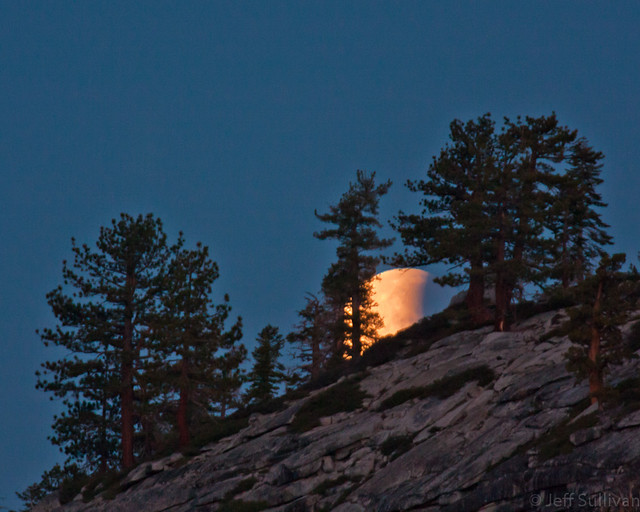I'm going on so many hikes, it's getting hard for me to follow me! I know, I'll go on my blog and see where I've been... Doh!
OK, so painstakingly reconstructing my movement by photo timestamps it now comes back to me... after Minaret Lake I shot Rock Creek/Little Lakes Valley for dawn, then made my way back to Mammoth to talk to Ranger Mike about destinations. He had photos from all over on his PC, recommended a bunch of places, and issued me a permit to hike to Gardisky Lake up near Saddlebag so I could shoot back towards Conness Peak at sunrise. It didn't turn out that way, but I'm getting ahead of myself... let me start with Rock Creek.
 The Mosquito Flat trailhead at the end of the Rock Creek road has a hikers' walk-in camp at the end... all you need is a wilderness permit to stay there. That puts you right there to do a short hike before dawn to get up the lakes as the alpen glow starts to light up the peaks. It's a lot easier to pull this off in the Fall, when the sun comes up later! Anyway, you can start a few hundred yards up the trail (and some bushwhacking to the south) at Long Lake, but I usually go a mile or so up to the first lake on the trail There's an even better lake another mile up, but who wants to get up that early? Either way plan to arrive roughly 30 minutes before the published sunrise time, as the sun will stike these tall peaks 10-15 minutes before sunrise. For the more subtle alpenglow before the direct sunlight, allow yourself that additional 15 minutes. Make sure you also make allownaces for your fitness level and your degree of acclimation to the elevation around 9000 feet (another reason to stay overnight nearby... it makes the hiking easier). One really nice feature about Little Lakes Valley is that the mos tinteresting mountains to shoto are far enough to the south that you're not shooting directly away from the sun, and your shadow doesn't get in your shots after the sun rises. You can shoot your way up the valley for hours.
The Mosquito Flat trailhead at the end of the Rock Creek road has a hikers' walk-in camp at the end... all you need is a wilderness permit to stay there. That puts you right there to do a short hike before dawn to get up the lakes as the alpen glow starts to light up the peaks. It's a lot easier to pull this off in the Fall, when the sun comes up later! Anyway, you can start a few hundred yards up the trail (and some bushwhacking to the south) at Long Lake, but I usually go a mile or so up to the first lake on the trail There's an even better lake another mile up, but who wants to get up that early? Either way plan to arrive roughly 30 minutes before the published sunrise time, as the sun will stike these tall peaks 10-15 minutes before sunrise. For the more subtle alpenglow before the direct sunlight, allow yourself that additional 15 minutes. Make sure you also make allownaces for your fitness level and your degree of acclimation to the elevation around 9000 feet (another reason to stay overnight nearby... it makes the hiking easier). One really nice feature about Little Lakes Valley is that the mos tinteresting mountains to shoto are far enough to the south that you're not shooting directly away from the sun, and your shadow doesn't get in your shots after the sun rises. You can shoot your way up the valley for hours. To make a long story short, one brunch, coffee / Internet stop and wilderness permit later I was off to Yosemite. The weather didn't seem interesting enough for a great show at Cathedral Lakes that night, so I headed over to Tenaya Lake.
To make a long story short, one brunch, coffee / Internet stop and wilderness permit later I was off to Yosemite. The weather didn't seem interesting enough for a great show at Cathedral Lakes that night, so I headed over to Tenaya Lake. The west end of the lake offers a variety of interesting foregrounds and a nice view of the granite ridges over the east end, so I headed there. The wind died right on schedule as the sun dropped and the light warmed. I crossed the outlet creek to shoot from the crushed granite beaches, but evan with heavy repellent the mosquitos were too persistent, so I retreated with a few nice shots already captured.
The west end of the lake offers a variety of interesting foregrounds and a nice view of the granite ridges over the east end, so I headed there. The wind died right on schedule as the sun dropped and the light warmed. I crossed the outlet creek to shoot from the crushed granite beaches, but evan with heavy repellent the mosquitos were too persistent, so I retreated with a few nice shots already captured.

































